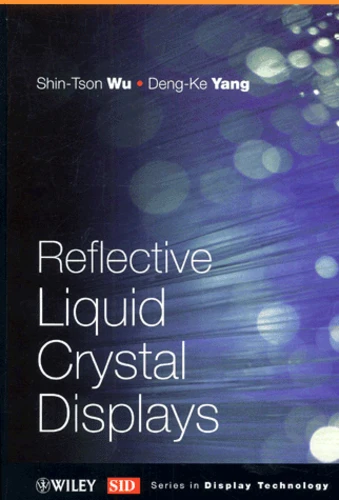Reflective Liquid Crystal Displays
Par : ,Formats :
- Paiement en ligne :
- Livraison à domicile ou en point Mondial Relay estimée à partir du 4 décembreCet article sera commandé chez un fournisseur et vous sera envoyé 10 jours après la date de votre commande.
- Retrait Click and Collect en magasin gratuit
- Livraison à domicile ou en point Mondial Relay estimée à partir du 4 décembre
- Nombre de pages335
- PrésentationRelié
- Poids0.73 kg
- Dimensions17,4 cm × 25,1 cm × 2,3 cm
- ISBN0-471-49611-1
- EAN9780471496113
- Date de parution01/01/2001
- Collectiondisplay technology
- ÉditeurWiley
Résumé
The evolution of portable communications applications has been facilitated largely by the development of reflective LCD technology. Offering a unique insight into state-of-the art display technologies, Reflective Liquid Crystal Displays covers the basic operations principles, exemplary device structures and fundamental material properties of device components.
Display engineers, scientists and technicians active in the field will welcome this unique resource, as will developers of a wide range of systems and applications. Graduate students and researchers will appreciate the introduction and technical insight into this exciting technology.
Featuring: Direct-view, projection and micro (virtual projection) reflective displays in the context of multi-media projectors, mobile internet and personal entertainment displays; Optimisation of critical display attributes: fast response time, low voltage operation and wide angle viewing; Description of the basic properties of liquid crystal materials and their incorporation into configurations for transmissive and reflective applications; Examination of the various operation modes enabling the reader to select the appropriate display type to meet a variety of needs; Overview and comparison of the complete range of reflective display technologies, and reflective LCD effects.
The evolution of portable communications applications has been facilitated largely by the development of reflective LCD technology. Offering a unique insight into state-of-the art display technologies, Reflective Liquid Crystal Displays covers the basic operations principles, exemplary device structures and fundamental material properties of device components.
Display engineers, scientists and technicians active in the field will welcome this unique resource, as will developers of a wide range of systems and applications. Graduate students and researchers will appreciate the introduction and technical insight into this exciting technology.
Featuring: Direct-view, projection and micro (virtual projection) reflective displays in the context of multi-media projectors, mobile internet and personal entertainment displays; Optimisation of critical display attributes: fast response time, low voltage operation and wide angle viewing; Description of the basic properties of liquid crystal materials and their incorporation into configurations for transmissive and reflective applications; Examination of the various operation modes enabling the reader to select the appropriate display type to meet a variety of needs; Overview and comparison of the complete range of reflective display technologies, and reflective LCD effects.

